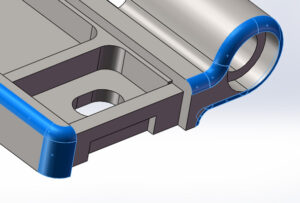Does the type of hinge you choose really matter? From an outsider’s perspective, it may seem like a minor component, but the hinge plays an indispensable role in the functioning of a variety of applications. What differentiates a heavy-duty hinge from a light-duty hinge, and how does each one affect performance? Let’s delve into this.
Heavy-duty hinges are typically made from robust materials like stainless steel, capable of bearing significant weights and offering high durability, making them ideal for heavy doors, gates, or machinery. On the contrary, light-duty hinges, often crafted from thinner metals or plastic, are designed for lighter loads and less strenuous conditions, suitable for indoor use or smaller, less frequently used equipment.
Now that we’ve set the stage, let’s dive deeper. I promise you, by the end of this post, you’ll be able to distinguish between these hinge types and understand where to use each of them.

How is the Load-Bearing Capacity Different?
When it comes to load-bearing capacity, heavy-duty hinges take the lead. Manufactured from robust materials like stainless steel or brass, they can support weighty doors, gates, and machinery. The stats? You’d be surprised to know that these hinges can carry weights up to a whopping 1000 pounds!
On the other hand, light-duty hinges, crafted from thinner metals or plastic, are suitable for less weighty applications. The maximum weight they can handle? Not more than 40 pounds.
What About Durability?
Let’s talk durability. The strength of the materials used in heavy-duty hinges equates to higher durability. These hinges can resist harsh weather conditions and frequent use, and they rarely warp or deform, making them ideal for outdoor and industrial applications.
Light-duty hinges, however, might not fare as well in rough conditions. They have a lower resistance to wear and tear, which could lead to a shorter lifespan. Nonetheless, they serve well in applications that require less frequent use and are sheltered from the elements, like in the case of indoor equipment.

Which One is Easier to Install?
Ease of installation is another factor worth considering. Heavy-duty hinges, due to their sheer size and weight, often require professional installation. The tools required, and the effort that goes into mounting these hinges, can be quite intensive, especially considering the heavy materials and structures they are attached to.
In contrast, light-duty hinges are relatively easier to install. Their lightweight and smaller size make them manageable for most people. They can often be installed using simple hand tools and don’t demand a high level of technical expertise. This is particularly useful in DIY projects or small-scale applications.
Conclusion
So, should you opt for a heavy-duty hinge or a light-duty hinge? The answer lies in your specific requirements. If you need a hinge for heavy loads, outdoor applications, or frequent usage, a heavy-duty hinge should be your choice. Conversely, for indoor applications with lighter loads and less frequent usage, a light-duty hinge could serve you well.
Remember, it’s not just about the hinge type; it’s about making the right choice for your unique needs. Now, you’re equipped with the knowledge to make that decision. Happy hinge-hunting!




